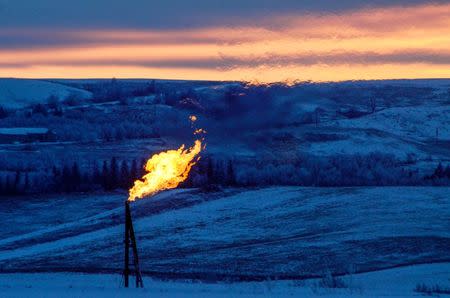Natural Gas Futures Rally As Cold Weather Seen Returning

Investing.com - Natural gas futures were higher on Tuesday, moving further away from their lowest levels in almost two years set last week, as updated weather forecasting models showed a return to colder weather over the eastern U.S. during the first week of March.
Front-month U.S. natural gas futures climbed 7.0 cents, or around 2.8%, to $2.628 per million British thermal units (btu) by 8:20AM ET (1320GMT).
It reached its best level since Feb. 9 at $2.662 earlier in the session, well above last Thursday's 21-month low of $2.530.
U.S. gas futures did not settle on Monday due to the Presidents' Day holiday.
The commodity saw a weekly decline of 1% last week, its third such loss in a row.
Natural gas prices are down almost 30% since late January, amid speculation the end of the winter heating season will bring warmer temperatures throughout the U.S. and cut into demand for the fuel.
Market experts warned that futures are likely to remain vulnerable in the near-term as the coldest part of the winter has effectively passed and below-normal temperatures in April mean less than they do in January and February.
Spring usually sees the weakest demand for natural gas in the U.S, as the absence of extreme temperatures curbs demand for heating and air conditioning.
The heating season from November through March is the peak demand period for U.S. gas consumption.
Meanwhile, market participants looked ahead to this week's storage data due on Thursday, which is expected to show a draw in a range between 112 and 128 billion cubic feet (bcf) in the week ended Feb. 16.
That compares with a decline of 194 bcf in the preceding week, a fall of 89 bcf a year earlier and a five-year average drop of 145 bcf.
Total natural gas in storage currently stands at 1.884 trillion cubic feet (tcf), according to the U.S. Energy Information Administration.
That figure is 577 bcf, or around 23.4%, lower than levels at this time a year ago and 433 bcf, or roughly 18.6%, below the five-year average for this time of year.
Related Articles
Gold Prices Still Under Pressure on Stronger Dollar
OPEC, Russia Said to See Oil Glut Dissipating at a Faster Rate

 Yahoo Finance
Yahoo Finance 